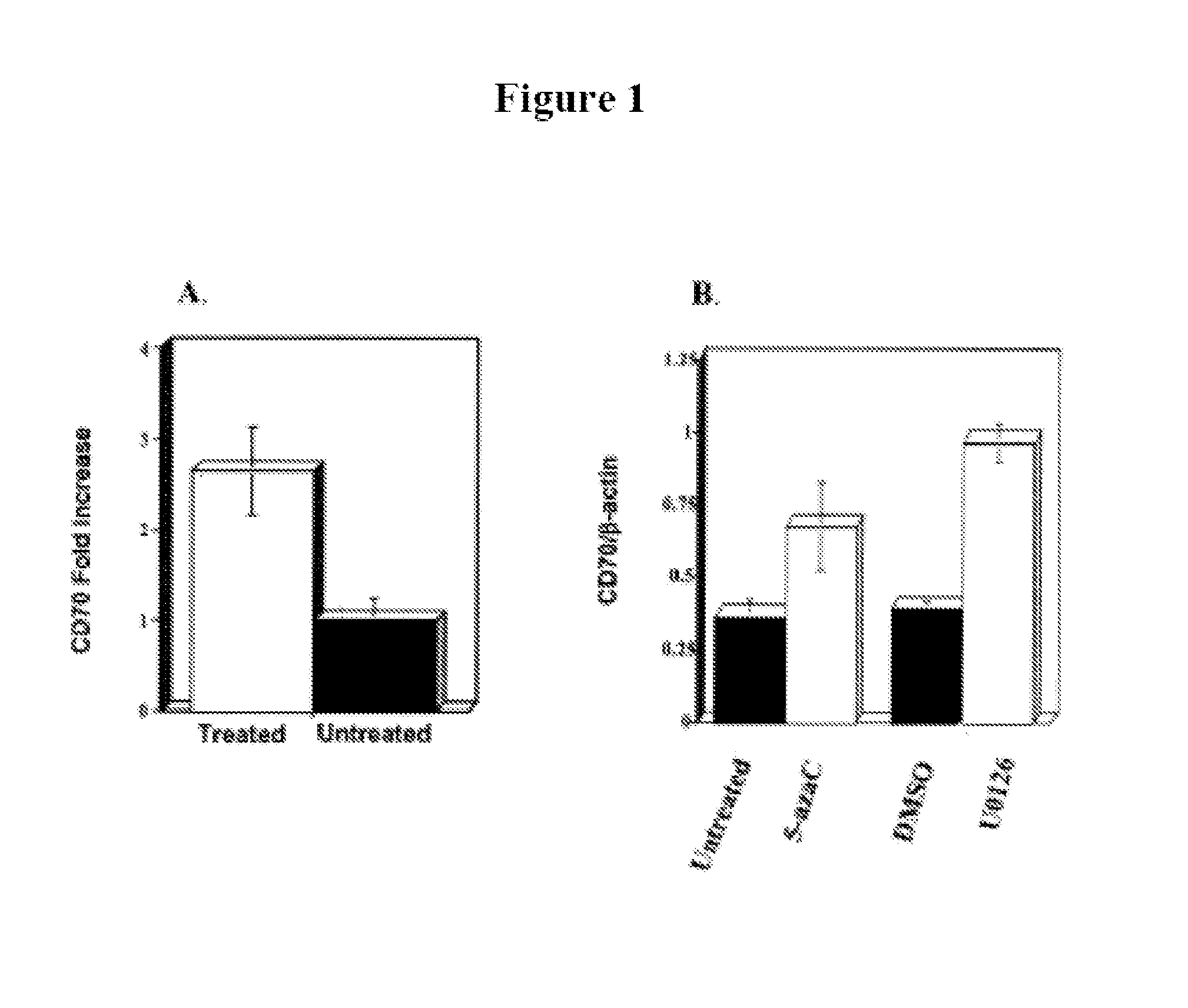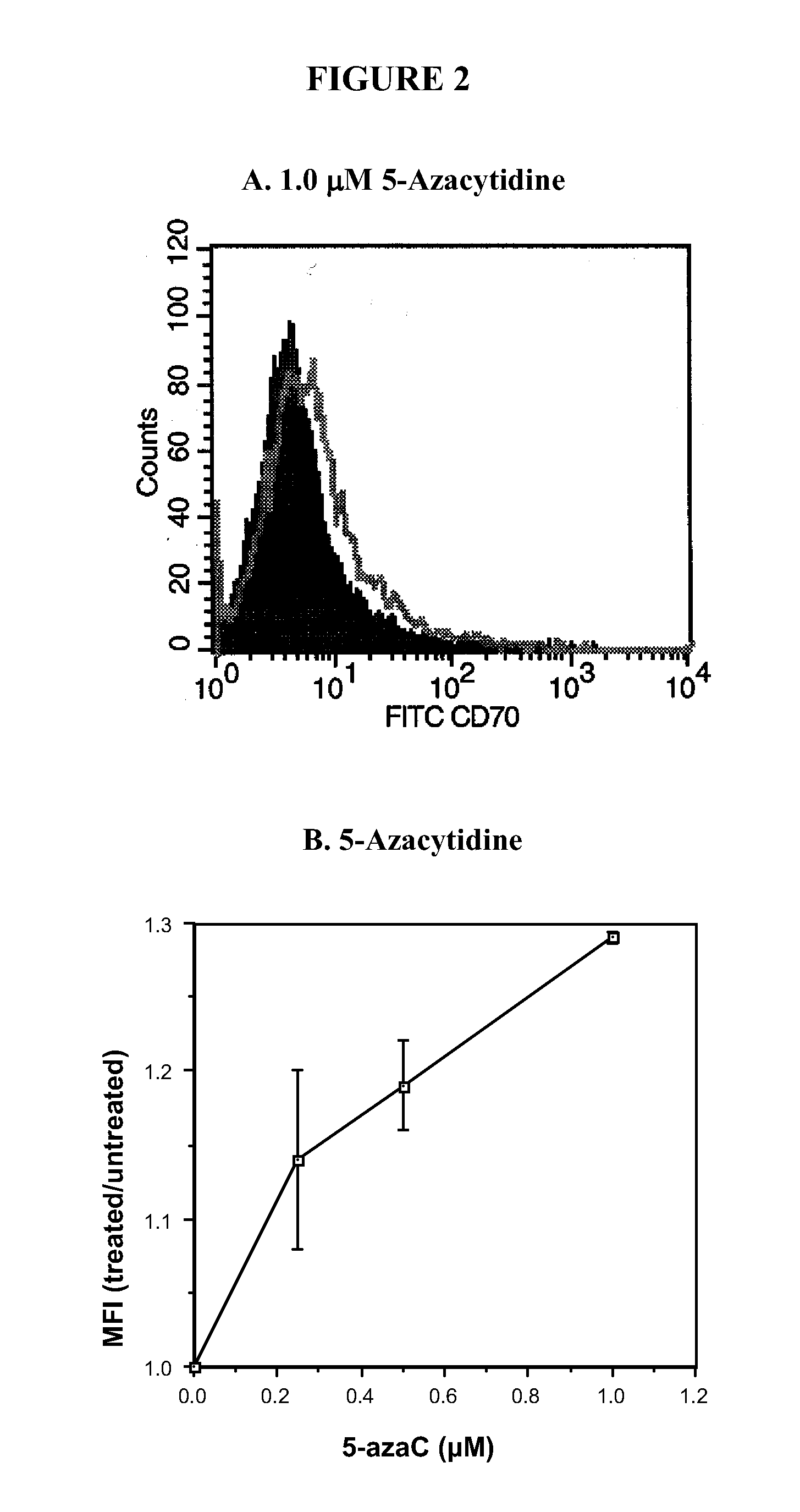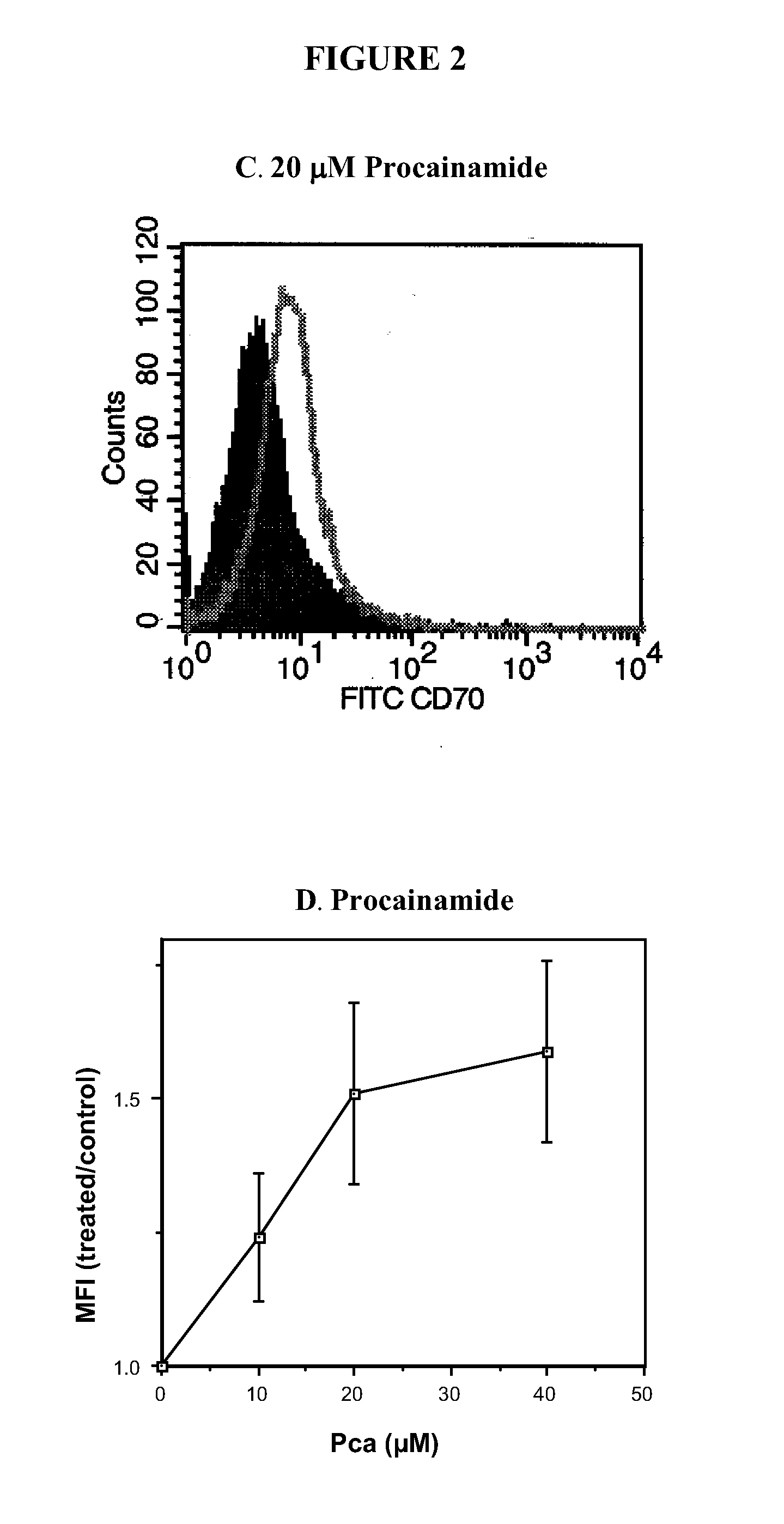Methods and kits for diagnosing or monitoring autoimmune and chronic inflammatory diseases
a technology for chronic inflammation and autoimmune diseases, applied in the field of diagnostics, monitoring and/or treating diseases, can solve the problems of debilitating and mutilating individuals, affecting their life expectancy, and not only being subject to life-long disability and misery, so as to prevent autophage killing and reduce ifn production
- Summary
- Abstract
- Description
- Claims
- Application Information
AI Technical Summary
Benefits of technology
Problems solved by technology
Method used
Image
Examples
example 1
Materials and Methods
[0331]Subjects. Subjects of the present invention were of two groups (See, e.g., Table 1 and Table 2). For one of the groups, systemic lupus erythematosus (SLE) patients were recruited from the outpatient and inpatient services at the University of Michigan. For the second group, SLE and rheumatoid arthritis (RA) patients were recruited from the outpatient Rheumatology clinics and inpatient services at the University of Michigan. For both groups, age-, race-, and sex-matched control subjects were recruited by advertising. The study protocols were approved by the University of Michigan Institutional Review Board. Patients with SLE and RA met the American College of Rheumatology criteria for these diseases (See, e.g., Tan et al., Arthritis Rheum 25, 1271 (1982); Arnett et al., Arthritis Rheum 31, 315-324 (1987)), and SLE disease activity was assessed by the SLE-Disease Activity Index (SLEDAI) (See, e.g., Bombardier et al., Arthritis Rheum 35, 360 (1992)). Active d...
example 2
Identification of Methylation-Sensitive T Cell Genes
[0368]Oligonucleotide arrays were used to identify T cell genes affected by DNA methylation inhibition. Purified T cells were stimulated with PHA and treated with 2-deoxy-5-azaC as described in Materials and Methods. Three 3 days later, gene expression was compared in treated and untreated cells using oligonucleotide arrays. Overall, 118 genes reproducibly increased ≧2-fold, and 12 genes decreased ≧2-fold. In 2 independent experiments, CD70 expression increased 2.6±0.6-fold (mean±SEM) in treated cells relative to untreated controls (See FIG. 1A). These results were confirmed using real time RT-PCR to compare CD70 mRNA levels in untreated cells and cells treated with 5-azaC and the ERK pathway inhibitor U0126. U0126 inhibits DNA methylation by decreasing levels of DNA methyltransferase 1 (Dnmt1) and Dnmt3a (See, e.g., Deng et al., Arthritis Rheum 48, 746 (2003)). Both drugs increased the expression of CD70 mRNA relative to that of b...
example 3
Comparison of DNA Methylation Inhibitors on CD70 Expression
[0369]The effects of DNA methylation inhibitors on T cell CD70 expression were further confirmed by treating T cells with a panel of DNA methylation inhibitors and measuring CD70 by flow cytometry. The panel of inhibitors used included 5-azaC, an irreversible DNA methyltransferase inhibitor (See, e.g., Glover and Leyland-Jones, Cancer Treat Rep 71, 959 (1987)) procainamide, a competitive DNA methyltransferase inhibitor (See e.g., Scheinbart et al., J Rheumatol 18, 530 (1991)), and the ERK pathway inhibitors PD98059, U0126, and hydralazine. Kinetic analyses performed by flow cytometry on days 1, 3, 5, and 7 after treatment with all 5 drugs demonstrated that the increase in CD70 expression was maximal at 3 days after treatment. Histograms represent the CD70 expression in untreated, PHA-stimulated T cells (See FIG. 2A, filled histogram) and in T cells treated with 1 μM 5-azaC for 3 days (See FIG. 2A, open histograms). A small i...
PUM
| Property | Measurement | Unit |
|---|---|---|
| Fraction | aaaaa | aaaaa |
| Fraction | aaaaa | aaaaa |
| Fraction | aaaaa | aaaaa |
Abstract
Description
Claims
Application Information
 Login to View More
Login to View More - R&D
- Intellectual Property
- Life Sciences
- Materials
- Tech Scout
- Unparalleled Data Quality
- Higher Quality Content
- 60% Fewer Hallucinations
Browse by: Latest US Patents, China's latest patents, Technical Efficacy Thesaurus, Application Domain, Technology Topic, Popular Technical Reports.
© 2025 PatSnap. All rights reserved.Legal|Privacy policy|Modern Slavery Act Transparency Statement|Sitemap|About US| Contact US: help@patsnap.com



